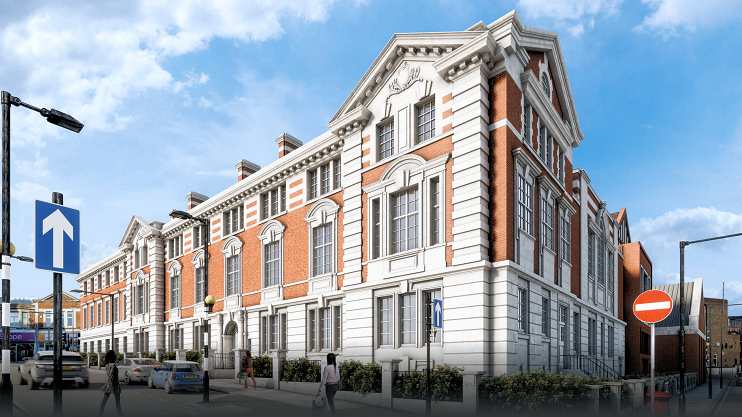Acton
Acton, Ealing
A sprawling suburb situated between Ealing and Chiswick, now almost wholly residential but formerly of major industrial significance

This page is intended to provide a brief introduction to Acton, with in-text links to more detailed pages on each of its quarters.
First recorded in 1181, Acton’s name translates roughly as ‘oak farm’. Acton is one of the few places in London with evidence of Stone Age worship. A Bronze Age cemetery has also been located and relics have been found indicating two phases of Roman activity.
The area surrounding the village of Acton remained arable farmland until the latter half of the 19th century, when the ‘new model suburb’ of Bedford Park was created to the south-east. East Acton owes its early development to the Worshipful Company of Goldsmiths, whose almshouses have recently been renamed the Goldsmiths Buildings and marketed on a commercial basis. Elsewhere, suburbanisation was well advanced by the outbreak of the First World War.
South Acton was (and to some degree still is) the poorest and most overcrowded part of the district. It was once famous for its laundries and gained the nickname ‘Soapsuds Island’.
Between the wars, Acton became a ‘suburb of production’, primarily in the vicinity of North Acton and Park Royal. In the 1930s this was Britain’s largest industrial area south of Coventry.
The inconsistent evolution of Acton’s land use has resulted in a variety of housing styles, from Victorian villas, through cottage estates to council tower blocks. The roads nearest Chiswick and Ealing (that is, in the south-east and west) are considered particularly desirable and West Acton is especially popular with the Japanese community because of the Japanese school there. Many of the larger properties have been subdivided into flats, often rented by young professionals.
New homes are being created in Acton wherever opportunities permit, from the transformation of the post-war South Acton estate into Acton Gardens through the creation of a ‘student village’ in North Acton to the conversion of the old town hall into an apartment block, as shown in the developer’s CGI at the top of the page.
In 1959 Acton county grammar school pupils Roger Daltrey, John Entwistle and Pete Townsend formed the Detours, later to become The Who.
Adam Faith, the pop superstar turned actor, grew up on a council estate in Acton Vale.
